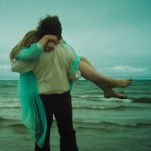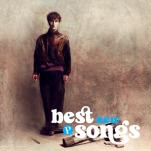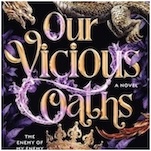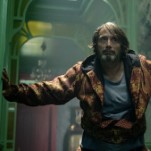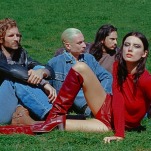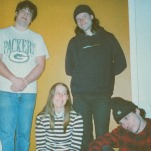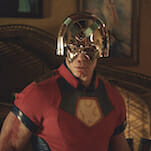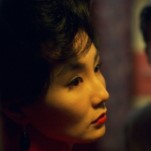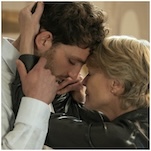Why It’s So Difficult to Adapt The Time Traveler’s Wife’s Problematic Romance
Photo: Courtesy of HBO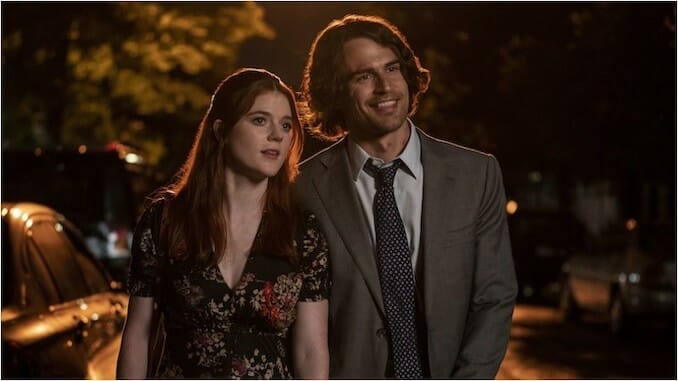
Steven Moffat wastes no time with The Time Traveler’s Wife, his television adaptation of Audrey Niffenegger’s beloved yet complicated novel: Halfway through the first episode, when a 41-year-old Henry DeTamble (Theo James) has taken his first trip back in time to meet the six-year-old version of his wife Clare Abshire (Everleigh McDonell), she asks about his wife, not realizing they’re the same person: “Was it love at first sight?”
“God, I hope not,” he quips, his private joke, but when young Clare pushes to understand why grownups enjoy kissing, he points at the toy she’s brought to the meadow: “Why do you like brushing your horse’s hair?”
“It’s not brushing,” little Clare says, “I’m grooming her,” and Henry’s reaction is appropriately squicked out: “Oh-kay, moving on.” Moffat makes a joke (and a painfully self-aware one, at that) out of the biggest sticking point of what has become a polarizing sci-fi love story: that the only way for Clare and Henry to fall in love is for her to have known him since she was a child—an adult version of him, his best possible self, who is also thirty-plus years her senior.
When The Time Traveler’s Wife was published in 2003, this bizarre meet-cute was readily accepted as the foundation of their relationship. In the vacuum of a story—that is, nothing more than the words on the page—it takes on an almost fairytale sheen: Imagine getting to meet your partner, your soulmate, your better half, as an adorable child? Through the magic of time travel, the impossible happens: Henry gets to have a conversation (152 of them, to be precise) with his wife Clare before she ever knew who he was, to see her at her most unformed self.
But in the nearly two decades since the novel’s publication, readers have reevaluated this unconventional, nonlinear relationship and found it to be less achingly star-crossed and more creepy upon closer scrutiny. It didn’t help that the 2009 movie adaptation, with actual people inhabiting the characters, revealed the clear dissonance between a thirtysomething man squatting at the level of a girl who hasn’t yet reached puberty. Watching Eric Bana picnicking with the actress playing young Clare sets off a primal alarm, no matter how well he knows her in the future. With the 2022 TV series, there are moments that you watch James and (alternately) McDonell or Caitlin Shorey sitting on the rock playing checkers and you almost forget the specifics of their relationship… but then she says something precocious or he says something paternal, and you remember that even though nothing untoward happens between this young girl and this older man, their present selves (James playing 28 and Rose Leslie at 20) are very intimate.
What’s more, the reason that the twentysomething lovers are able to leap headfirst into the kind of lived-in, fast-tracked relationship is that the emotional intimacy has been established for years and years. Despite the relationship being mostly platonic (until it very much isn’t, when she turns 18), hindsight has readers wondering, how much of Henry and Clare’s relationship is built on grooming?
In interviews, Moffat has adamantly denied this: “That’s not what the story is in the book or the film or the TV show,” he told TVLine when the series premiered last month. “He’s married to her. He meets her as an adult, he falls in love with her, he gets married to her and then he’s flung back in time, through no fault of his own, and is confronted with the childhood version of the woman he already loves. Even more so in the TV show version, he absolutely makes it clear that he’s just a friend.”
Moffat has had plenty of practice playing out this scenario, twice on Doctor Who: the 2006 episode “The Girl in the Fireplace,” in which a young Madame de Pompadour gets childhood visits from David Tennant’s Tenth Doctor; and the start of Amy Pond and the Eleventh Doctor’s (Matt Smith) arc with 2010’s “The Eleventh Hour.” Yet as the former is a single episode and the latter doesn’t advance Amy’s feelings for the Doctor beyond an unrequited girlhood crush, The Time Traveler’s Wife was still new terrain for handling the more delicate issues.
The first key way in which Moffat does so is to establish that every version of a person in time is a distinct entity, no matter how little time has passed between one version and the next. For instance, when Henry is 28 and yanked through time to become an unwitting mentor to his eight-year-old self, he lies to the chirpy, whiny, grieving boy that he is another time traveler, implying that young Henry is part of a long tradition of travelers. Unfortunately, too soon he has to reveal the truth: that no, there aren’t any other living time travelers he’s encountered; but at the same time, Henry is never alone.
The same reasoning goes for young Clare: When thirty- or fortysomething Henry tells the child and preteen versions of her that he and she are not married in the future, technically he’s telling the truth. Even teenage Clare is meant to be a separate person, though the series shows how those lines blur by having Leslie embody her (albeit awkwardly due to makeup, wigs, and costuming). Henry misleads her as well, until the confrontation with her rapist Jason in “Episode Three” forces him into admitting the truth in front of a shocked 16-year-old Clare.
Moffat’s other storytelling tenet is Henry’s aforementioned helplessness being thrown through time, which is emphasized in every single scenario of time travel but especially where it concerns an impressionable young girl. But despite Henry’s inability to control where he lands, the series also establishes how he’s had to learn to be self-sufficient once he’s up on his feet: stealing clothes and money, running from the cops, hiding out until his next involuntary jump back. Henry’s survival is built on the decisions he makes in the past.
-

-

-

-

-

-

-

-

-

-

-

-

-

-

-

-

-

-

-

-

-

-

-

-

-

-

-

-

-

-

-

-

-

-

-

-

-

-

-

-





























